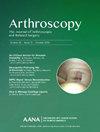Patient Acceptable Symptomatic State and Substantial Clinical Benefit Matter Most to Patients and Must Be Reported Correctly
IF 4.4
1区 医学
Q1 ORTHOPEDICS
Arthroscopy-The Journal of Arthroscopic and Related Surgery
Pub Date : 2024-10-01
DOI:10.1016/j.arthro.2024.06.036
引用次数: 0
Abstract
Despite a push for a focus on clinical rather than “statistical” significance and an emphasis on reporting of outcome thresholds such as the patient acceptable symptomatic state (PASS) and substantial clinical benefit (SCB), the PASS and SCB are rarely reported and, when reported, are often reported incorrectly. Yet, patients require satisfaction (PASS) as a result of our treatments, and patients desire to improve substantially (SCB). Determining whether patients are satisfied and/or substantially improved is simple . . . just ask them. The questions are known as anchor questions. Obviously, different patients have different PASS and SCB thresholds, and reliance on previously published literature for values of these thresholds can result in error—thus, the anchor questions. And, each patient must be assessed individually. Outcome thresholds are not group-level metrics, and they must be reported as the percentage of individuals who achieve the clinically significant outcome. Certain patients, such as athletes, have high baseline function and may demand maximum outcome improvement. In contrast, the minimal clinically important difference is a less-than-ideal measure; patients do not desire “minimal” improvement. Journals must do a better job of publishing patient-reported outcome measures that matter most to patients: satisfaction and substantial benefit.
患者可接受的症状状态和实质性临床疗效对患者最为重要,必须正确报告。
尽管人们提倡关注临床意义而非 "统计 "意义,并强调报告患者可接受症状状态(PASS)和实质性临床获益(SCB)等结果阈值,但 PASS 和 SCB 很少被报告,即使被报告,也往往是错误的。然而,患者需要对我们的治疗结果感到满意(PASS),而患者则希望得到实质性的改善(SCB)。确定患者是否满意和/或有实质性改善非常简单......只需询问他们即可。这些问题被称为锚定问题。显然,不同的患者有不同的 "满意 "和 "明显改善 "阈值,依赖以前发表的文献来确定这些阈值可能会造成误差,因此需要提出 "锚定问题"。而且,必须对每位患者进行单独评估。结果阈值不是群体级别的指标,必须以达到有临床意义结果的个体百分比来报告。某些患者(如运动员)具有较高的基线功能,因此可能要求获得最大结果改善或(MOI)。相比之下,最小临床意义差异(MCID)是一种不理想的衡量标准;患者并不希望获得 "最小 "改善。期刊必须更好地发布患者报告的结果指标(PROM),这对患者来说最为重要:满意度和实质性获益。
本文章由计算机程序翻译,如有差异,请以英文原文为准。
求助全文
约1分钟内获得全文
求助全文
来源期刊
CiteScore
9.30
自引率
17.00%
发文量
555
审稿时长
58 days
期刊介绍:
Nowhere is minimally invasive surgery explained better than in Arthroscopy, the leading peer-reviewed journal in the field. Every issue enables you to put into perspective the usefulness of the various emerging arthroscopic techniques. The advantages and disadvantages of these methods -- along with their applications in various situations -- are discussed in relation to their efficiency, efficacy and cost benefit. As a special incentive, paid subscribers also receive access to the journal expanded website.

 求助内容:
求助内容: 应助结果提醒方式:
应助结果提醒方式:


